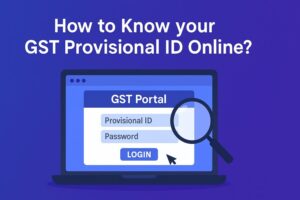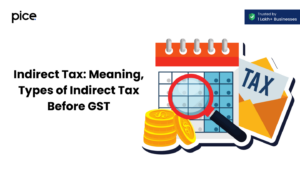Comprehensive GSTR 1 Checklist for Accurate Filing & GST Audit
- 17 Sep 25
- 9 mins
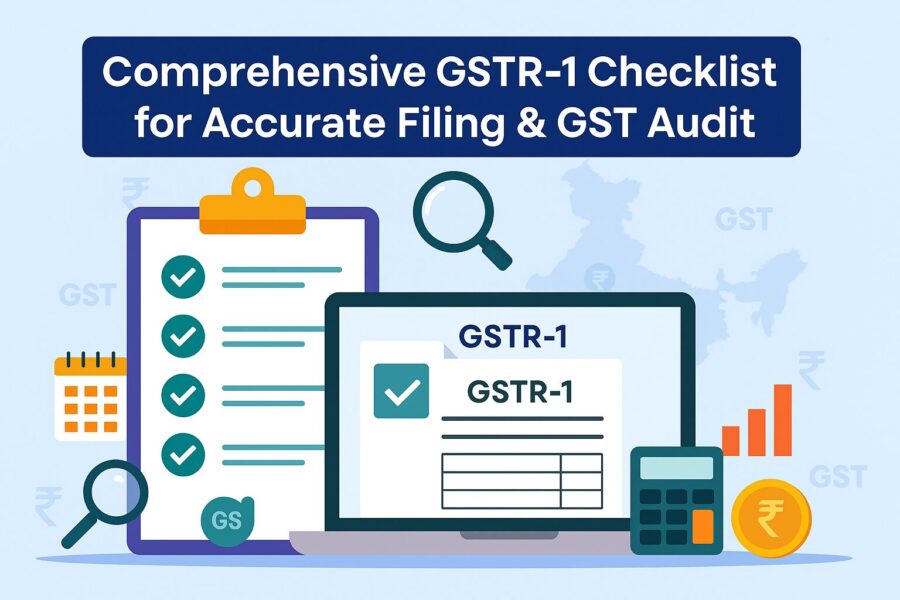
Comprehensive GSTR 1 Checklist for Accurate Filing & GST Audit
Key Takeaways
- A structured GSTR-1 checklist ensures timely, error-free GST return filing and avoids penalties.
- Businesses must verify invoice details, classify supplies correctly, and reconcile advances for accurate reporting.
- An audit checklist enhances compliance readiness, ensuring accuracy in credit notes, HSN summaries, and place of supply.
- Internal GST audits strengthen financial control, detect errors early, and optimise Input Tax Credit (ITC) claims.
- Regular audits and checklists lead to streamlined GSTR-1 filing, reduced risks, and better decision-making.
Filing GSTR-1 accurately is essential for every registered taxpayer under the GST regime. It involves reporting outward supplies in a detailed and timely manner. This is done to make sure that business compliances are met.
Businesses need to follow a structured approach to prepare their data and submit it in order to avoid discrepancies or penalties.
This article will inform you about how you can make a well-prepared GSTR 1 checklist that serves as a practical tool to streamline this process.
GSTR 1 Checklist to Complete While Filing
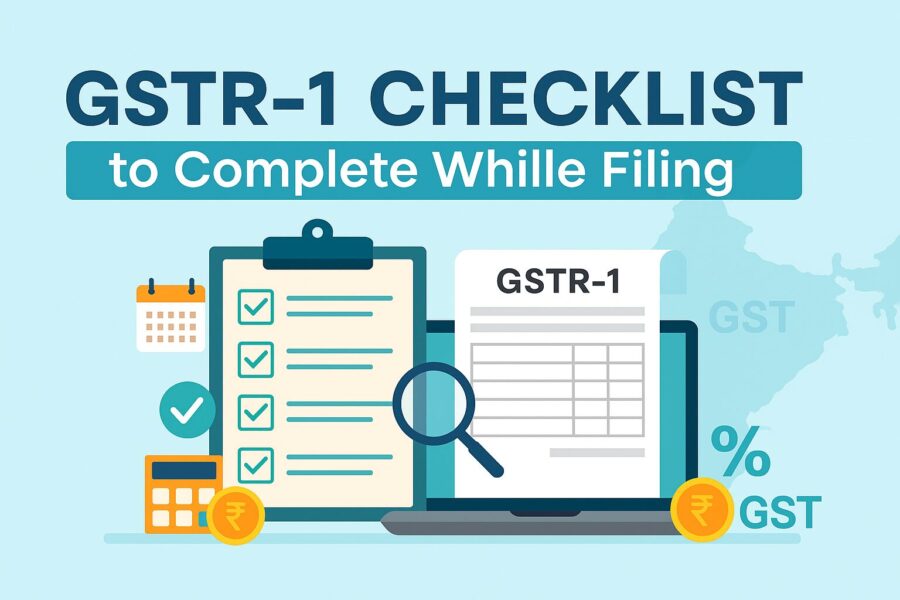
The comprehensive checklist to follow while filing a GSTR-1 return is as follows:
- Aggregate Turnover: You will need to fill in the yearly and quarterly aggregate turnover. For example, April 2024- April 2025 and April 2025- June 2025.
- Supplies to Registered Dealer: The details that one needs to fill in here include proper GST invoice details such as INV number, taxable value, date, place of supply (state), and tax rate.
- Zero-rated and Deemed Supplies: The information in this section is also the same as in the previous section. However, you additionally need to fill in the shipping bill number/ bill of entry and its date.
- Supplies Attracting RCM: Here, invoice details such as INV number, taxable value, date, place of supply (state), and tax rate are required.
- Supplies Interstate to Unregistered Dealers Having Invoice Value Above 2.5 Lakhs: The taxpayer needs to fill in the same information here as the previous two points.
- Supply to URD Except in Column 4: One needs to fill in the invoice details such as place of supply, taxable value, tax, and rate, here.
- Supplies to E-commerce: The data that you need to fill in here includes GST invoice details such as INV number, taxable value, date, place of supply (state), and tax rate.
- Separate Summary of Nil-rated, Non-GST, and Exempted Supplies: The summary will go in the format as follows:
- Inter-state supplies to RD
- Intra-state supplies to RD
- Inter-state supplies to URD
- Intra-state supplies to URD
- In the case of Credit Notes/ Refund Vouchers/ Debit Notes to Registered Dealers: There are two cases that will need different information in this section. For documents against the original invoice, the details required are the original invoice number and date, along with the document number, value, date, rate, and place of supply are necessary. For documents against the issued DR/ CR/ refund voucher, the original DR/ CR/ refund voucher number and date, along with the document number, value, date, rate, and place of supply are necessary.
- In the case of Debit Notes/ Credit Notes/ Refund Vouchers to Unregistered Dealer: Here, you will need to fill in the original invoice number and date, along with the document number, value, date, rate, and place of supply.
- Advances Adjusted/ Received: In case you have an advance received and no invoice in the same month, or if you have advances adjusted for the amendments to return for the previous month, then the details you need are net value, gross value, place of supply, and rate.
- HSN-wise Summary of Outward Supplies: The details to fill in here include HSN code, total quantity, UQC, total taxable value, tax, and total value.
- Documents Issued During Tax Period: There are a total of 12 documents you need here. They include:
- Invoices for the outward supply
- Invoices for the inward supply from an unregistered person
- Revised invoice
- Debit note
- Credit note
- Receipt voucher
- Refund voucher
- Delivery challan for job work
- Delivery challan for supply on approval
- Payment voucher
- Delivery challan in case of liquid gas
- Delivery challan in cases other than by way of supply
GSTR 1 Checklist for Auditing
For the process of auditing, there is a GSTR 1 checklist that you can follow to ease your work. It will also help you in ensuring audit readiness for any external audits in the future. These checkpoints in the audit checklist are as follows:
- You need to first verify all the sales invoices, along with the GSTIN of the recipients, for accuracy.
- Then you can check whether the record for all of the sales attracting the reverse charge mechanism (RCM) is correct.
- To maintain and ensure the right classification, a review of the deemed export supplies and zero-rated supplies is necessary.
- Make sure that the reporting of interstate supplies to unregistered persons is done.
- Remember to validate all of the advances adjusted and received during the tax period.
- Check the proper reporting of the credit notes, refund vouchers, and debit notes issued to unregistered and registered dealers.
- Make sure to check all of the sample invoices as per the GST invoice rules. Do this to see if they contain all of the mandatory invoice details.
- After that, check the HSN-wise summary of outward supplies. Ensure that its reporting is the same as the threshold of turnover-based reporting.
- Checking should be done for accurate and timely completion of any changes in the invoices or returns.
- Lastly, check the ‘place of supply’ parameter for any mistakes and missing values everywhere.
Benefits of Internal Audit Under GST
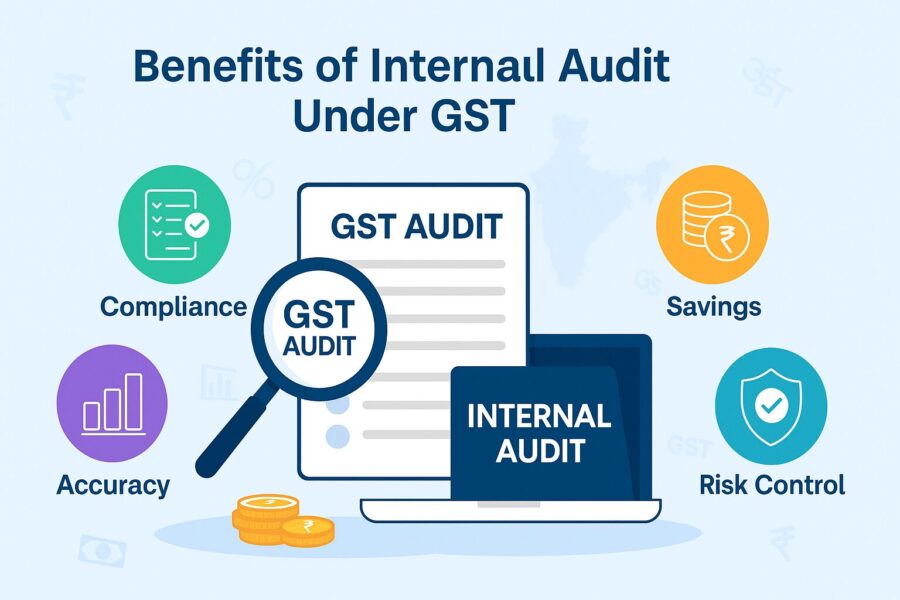
Conducting an internal audit under GST can provide several benefits. These are as follows:
- Compliance Assurance: Conducting an internal audit ensures that a business follows all of the GST laws and filing requirements, and doing this reduces the risk of penalties.
- Early Detection of Errors in GST Returns: Auditing helps in detecting any errors before it is too late. Maintaining an accurate record of filing ensures the mitigation of mismatch in values, preventing scrutiny from government tax authorities.
- Accurate Input Tax Credit Claims: Conducting accurate ITC audits helps in verifying the business’s ability to optimise ITC. It also helps in preventing the risk of incorrect ITC claims, such as excess claims.
- Improved Financial Controls: This auditing provides ultimate control of a business’s financials by maintaining a spotless financial record without any legal bumps. This also strengthens the internal controls of the company.
- Enhanced Decision Making: maintaining accurate filing data also enables access to correct data in times of decision-making. Thus, this helps in strategic financial planning.
- Risk Mitigation: This process also helps in taking timely action to make remedies if something is incorrect and prevent non-compliance. Thus, prevents a business from getting into any tax-related trouble by encouraging corrective actions through accurate reporting.
- Centralised Monitoring: In case a business has many GSTINs, conducting internal audits can provide the company with information about its GST compliance across branches. This provides a connected finance ecosystem to the business, helping in its comprehensiveness.
- Streamlined GSTR Filing: Finally, internal auditing also improves GST-return filing for a business by making the process error-free and smoother. This results in the reduction of audits and notices by government tax authorities.
Conclusion
Filing GSTR-1 accurately is crucial for GST compliance and smooth business operations. A well-structured GSTR 1 checklist not only ensures timely and error-free return filing but also helps in avoiding penalties and discrepancies. From validating bulk invoicing details to reporting supplies under various categories, each step plays a vital role in maintaining transparency and correctness in GST reporting.
Moreover, leveraging an audit checklist enhances compliance readiness and strengthens financial control through early error detection, accurate ITC claims, and risk mitigation. Internal audits also improve centralised monitoring and streamline the overall GSTR-1 filing process.
By following this comprehensive guide and checklist, businesses can ensure regulatory adherence while building a strong foundation for informed decision-making and sustainable financial management.
💡If you want to streamline your payment and make GST payments via credit, debit card or UPI, consider using the PICE App. Explore the PICE App today and take your business to new heights.
 By
By 







